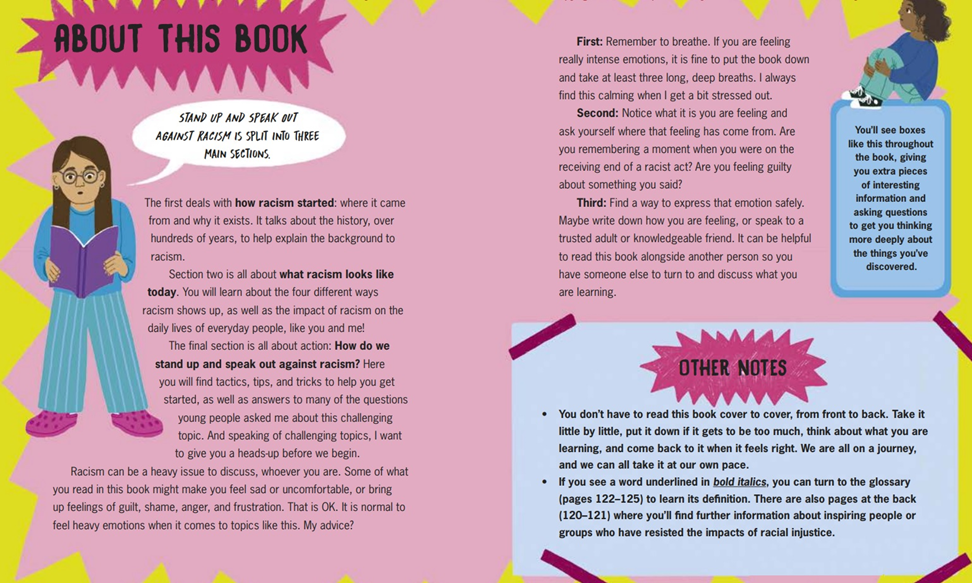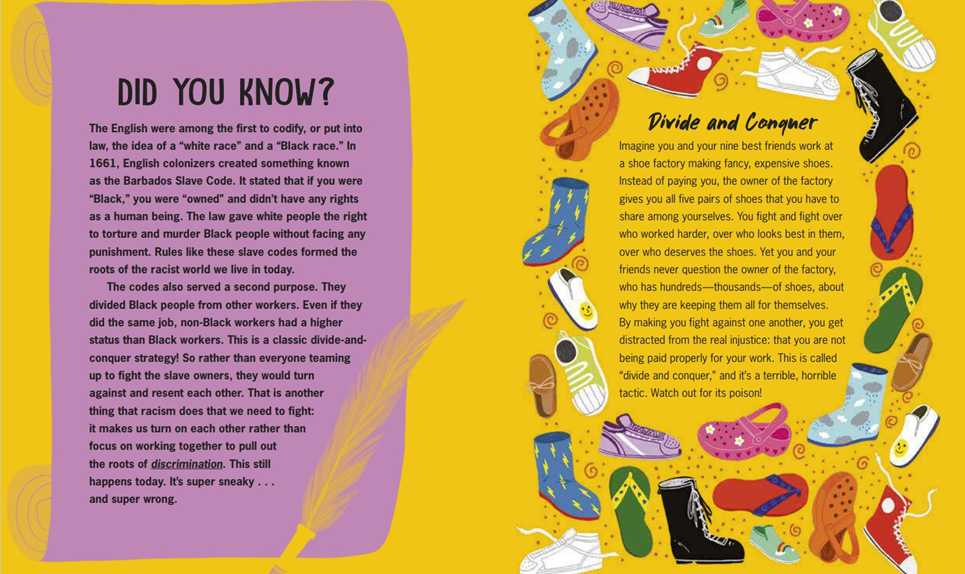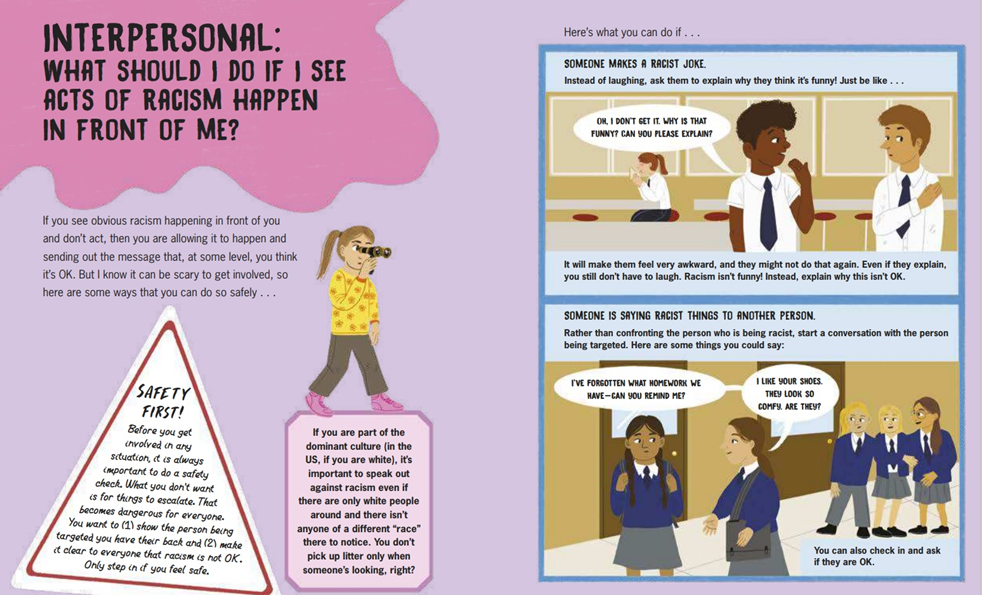Yassmin Abdel-Magied


About Author
Author and campaigner Yassmin Abdel-Magied talks to ReadingZone about her book Stand Up and Speak Out Against Racism.
Yassmin is a Sudanese diaspora writer, broadcaster, and award-winning social advocate. An award-winning speaker and globally sought-after advisor on engaging diverse communities and inclusive leadership, Yassmin has delivered keynotes and workshops in 25 countries in Arabic, English and a smattering of French. You can follow her on twitter/Instagram @yassmin_a and TikTok @yassmin_am.
Interview
Stand Up and Speak Out Against Racism (Walker Books)
August 2023
Author and campaigner Yassmin Abdel-Magied's new book, Stand Up and Speak Out Against Racism, answers the kinds of questions children and young people might have about racism, from why it exists to how we might internalise it, and what we can all do to speak out against it. It's a book that gives answers to questions you didn't know you had, and it will equip all readers - young and old - to help call out and address the problems racism causes in our societies.
In this video and Q&A, Yassmin talks about her background in activism and why she wanted to write this book for young people, as well as what we can expect to find in Stand Up and Speak Out Against Racism.
"This is a book that will hopefully empower readers - not to be scared of discussions about racism, but to understand them, lean into them, and realise they can do something about it." Yassmin Abdel-Magied.
Q&A with Yassmin Abdel-Magied
1. Why did you want to write Stand Up and Speak Out Against Racism for children and young people?
So much of the conversation about fighting racism has been about adults - their unlearning, their learning, their doing the work. But children live in the same world, are exposed to so much of the same injustice, but are often left in the dark on how to deal with it, or on the real reasons behind why these injustices occur.
Children are so smart and clued in, but they're looking for guidance, they're hungry for direction! I wanted to create a resource that brought children into the conversation around racism, taught them the foundations, and gave them the tools - and courage - to be able to do something about it. I didn't want to be flippant, or dismissive, or teach them information that they would need to unlearn when they got older. I wanted them to understand from the get-go.
It's quite difficult to find this information out - it's not made easily accessible for children, there isn't really a syllabus for 'racial injustice', certainly not in Britain. But hopefully this book will change that.
2. What will readers learn from reading the book? How is it organised?
The book is structured in three parts: How Did Racism Start, Racism Today, and How to Stand Up and Speak Out. In each section, the information is organised through 'questions' that are informed by the questions young people raised when I asked them what they wanted to learn about racism. The Q&A structure lends itself to directly responding to the burning questions young people had, and I've also included pop outs and other informational spreads to add additional context.
So many of the questions are pertinent, like the basic 'Why did racism begin?', which is a more complex question than most folks realise…, all the way to 'What should I do when I see racism in front of me', and 'why is it weird to bring up racism?' and 'why should I care when my life is already difficult'. I don't shy away from the tricky stuff - I lean into it, in the hope that talking about it will change lives.

3. Can you talk a little about the style you chose to narrate the book?
I wanted this book to be as accessible as possible, for as many people as possible. I've been giving talks and workshops to young people for many years, and had a sense that if I used the same voice I use in these classes in my book, they would respond positively. My voice is also lightly humorous, without being dismissive, which I think is an important balance to strike with such a heavy topic. Ultimately, I wanted to be a guide for the reader on their anti-racism journey, and what better way to be a guide than through your own voice?
4. How did you move into activism? How much work have you done already around helping children and young people to address racism?
I've been involved in activism since I was a child. I was a Sudanese born, Muslim (hijabi-wearing) girl who grew up in a very conservative society in the 90s and 2000s - there was no way to avoid the injustice around me, and from a very early age I was compelled to act.
From being involved in Human Rights organisations like Amnesty International and World Vision in school, to starting my own youth organisation at 16 (Youth Without Borders), and later, Mumtaza (focused on empowering women of colour), I've been engaged with young people and justice work for as long as I can remember. Whether through formal organisations, protesting on the streets or campaigning for policy change, for me, social justice work can be described as a way of life.
5. Did you still need to do research in order to write this book? Were there any facts you uncovered that particularly surprised you?
I knew most of what I wanted to write, but it was important to me that I researched everything I wrote in order to ensure what I was teaching others was factually accurate! Nothing surprised me per se, but there were details that I found were worse than my memory recollected: how there was not a single African person at the Berlin Conference in 1884, where the African continent was divided among the European empires, or that Jewish communities were expelled from England for many hundred years.

6. Why did you want to put the focus of this book on 'standing out and speaking up' against racism?
As much as the book is about teaching readers the history of racism and what it looks like today, I didn't want to leave readers feeling disempowered. I wanted them to leave the book feeling equipped to do something with all their knowledge - after all, this is the question that I get asked the most: what can I do about it?
Also, we can only eradicate racism if we all stand up, and speak out, against it. I believe people can do that at any age, so long as they are prepared and equipped, and that is what the book is focused on.
7. How would you like teachers to introduce Stand Up and Speak Out Against Racism in the classroom and at school? Would you like adults as well as children to read the book?
This is definitely a book for adults as well as children - I cannot tell you how many adults have already told me they've learnt so much from the text!
I want teachers to introduce the book to their students as a handbook to understanding why racism really exists, what it looks like today, and what people can do about it. I want them to see it as a guide book, a reference book, something they can come back to, discuss with their classmates, reflect on, and be empowered by.
This is a book that will hopefully empower readers - not to be scared of discussions about racism, but to understand them, lean into them, and realise they can do something about it.
8. If there was one change you would like your readers to initiate in their own lives after reading this book, what would that be?
I want readers to feel empowered to have regular conversations about racism in their lives, even with people who might not usually talk about it (their parents, sports coaches, etc). I want them to start to identify where they might have internalised racism and start to work on undoing that. I also hope that readers who are adults will support these conversations with children, and see this as the beginning of a lifelong journey, not simply something you pick up for a term. It's like exercise - we have to keep working that muscle!

9. What do you think of the illustrations by Aleesha Nandhra, and the book's layout? Is this 'scrapbook' feel what you had in mind when you wrote it?
From the beginning, I knew that the illustrations were going to be key to getting this book right. I wanted the book to feel fun, approachable and exciting. While I was writing the text, I was making notes in the margins on the kind of imagery I wanted (a tree, a mountain, a comic, etc), and then worked closely with my editor, Non, and the wonderful team at Walker, to make sure the metaphors all made sense, and the illustrations reflected my intention.
We went back and forth many times to make sure the details were right, the nuances were spot on, and the results were better than I could have imagined! I love what Aleesha has done and see this book as evidence of what can be achieved when we work collaboratively. Stand Up and Speak Out Against Racism is greater than the sum of its parts, and it's a book I am incredibly proud of.
10. Do you have any more books planned? What about the books you read - any recommendations for young people?
I'm always writing - I have a couple of adult fiction books I'm working on that may or may not be announced in the next few months (publishing is always so mysterious). Once those are out in the world I may return to middle grade… but my big recommendation right now is Angie Thomas's new book, Nic Blake and the Remarkables! A really fun read and the beginning of a great series, I think!
11. What do you enjoy doing when you're not at your desk? What does a perfect relaxation day look like?
Oh, I am a big fan of hobbies. A perfect day starts with a trip to Richmond park for a horse ride, then jumping on the bus to find a brunch spot nearby, where I can read a little and sip an oat flat white. I might wander around a local market, pick up some flowers and fresh pastries, then head into the city to meet some friends, lounge around a park (if the weather permits) before finding a theatre show to check out, followed by a late but delicious dinner. I only have a few days like this a year, but they're my fav!
12. Do you do much work with schools? What do your events look like?
I do! I love doing events with schools, partly because it's a great way for the students to connect to the person behind the book, but partly also because I learn so much from them! In my events I usually do readings from the book, talk about how I became a writer and came to write this book, explore the themes and questions discussed in the text, and have a robust Q&A with the students (with differing levels of interactivity depending on the age group). Sometimes, I may include role play (to demonstrate some of the examples in the book). I like to keep things fresh, lively and engaging, and hopefully leave the students with some tangible takeaways!
 Stand Up and Speak Out Against Racism
Stand Up and Speak Out Against Racism
